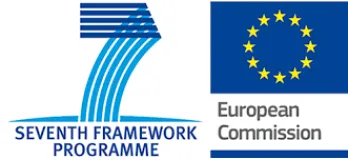ENERGY IN TIME
Relevant project information
Dates
Project website
Role of CIRCE
Grant agreement number
Funded by

Description and objectives
The operation phase of a building represents 80% of its life cycle cost, of which 50% is a consequence of energy use. In addition, up to 90% of carbon emissions throughout its life cycle occur during this operation phase, mainly as a result of energy consumption for air conditioning, lighting and electrical equipment. Therefore, economic and energy saving strategies that act on this phase of a building's life will have a major impact on its life cycle cost.
Energy in Time (EiT) aims to go beyond current building control techniques. It will develop an integrated approach to operation and control, combining state-of-the-art modeling techniques with the development of an innovative simulation-based control technique, comprising:
- Advanced simulation models: virtual representation of building behavior.
- Simulation-based control of building performance, self-adapting to the actual conditions of the building users.
- Continuous supervision: combination of advanced monitoring systems, fault detection and diagnostic tools. This will allow the detection and implementation of corrective measures and predictive maintenance strategies.
- Medium-term decision support tool based on trend analysis.
EiT will centralize the remote control of different buildings in an automatic process by means of a control tool integrated into the buildings' energy management systems.
Value proposition
The methodology for implementing the improvement solutions will be defined for both existing and new buildings from their commissioning. The variety of scenarios selected in relation to the typology of the buildings, their use, location and climatology, will allow a “proof of concept” of the EiT solution, in terms of validation, reproducibility and adaptability. The solution will be tested and validated in an airport, offices, a test laboratory, a tertiary building and a hotel.
Energy in Time (EiT) aims to develop a control method based on intelligent energy simulation to reduce energy consumption - and consequently the energy bill - in the operational phase of existing non-residential buildings. This methodology will reduce inefficiencies in the complex and contribute to improving the building's energy efficiency and comfort.
The project will provide new techniques based on the prediction of internal comfort conditions and user behavior to improve the lifetime and efficiency of energy equipment and facilities through continuous monitoring and predictive maintenance.
Energy in Time is aimed at existing non-residential buildings, as they present the building typologies that will have the greatest impact. At the same time they have a large margin for improvement due to the variety and quantity of installations and equipment they comprise, and the operational management model used in them.
Project partners
ACCIONA, ANA Aeroportos de Portugal, CIRCE, Cork Institute for Technology, Université de Lorraine, Centre Scientifique et Technique de Batiment, FUNIBER, Institutul de Cercetari Electrotehnice, Integrated Environmental Solutions, STAM SRL, Universidad de Granada, United Technologies Research Center Ireland, Caverion Suomi Oy.


